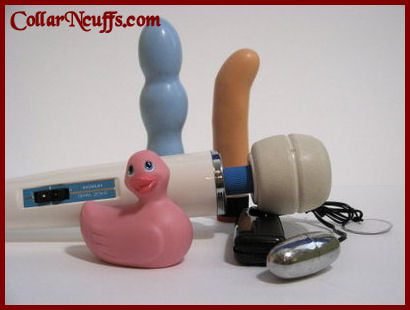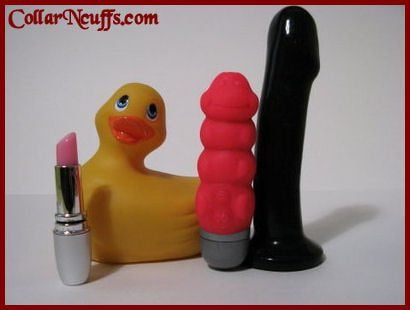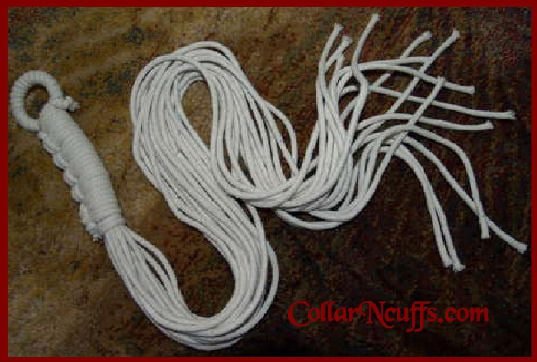We all love our toys but do know all there is to know on toy cleaning? What about toy cleaning practices for safer sex?
Table of Contents
Our bondage and Femdom sex toys bring us so much enjoyment. The better we look after for them, the longer they’ll give us pleasure. The following are some toy cleaning techniques to keep your toys in tip top condition
TOY CLEANING OF BONDAGE SEX TOYS, USED FOR MONOGAMOUS
All sex toys should be cleaned periodically even if they don’t come into contact with bodily fluids. Even something as simple as blindfolds should be cleaned. Makeup and eye goop can get on it and that can be transferred to another person or infect the same person’s eye if there’s too much build up.
METAL

Toy cleaning for Metal devices (clamps, handcuffs and some vibrators) are washed with hot water and antibacterial soap (in order to prevent rusting) and dried with a clean towel.
BATTERY OPERATED TOY CLEANING

Toy cleaning for Sex toys which run on batteries should never be dipped in water, because water is very likely to damage the device. The fact is that the breakage is not always noticeable and at the same time it really can cause very severe consequences, up to electric shock. To remove dirt from microscopic chinks and holes on the device’s surface use a soft brush, for example a toothbrush or a soft brush for nails cleaning.
RUB, SILICONE, AND PLASTIC TOY CLEANING

Toy cleaning for Sex toys made of rub (soft skin), silicone and plastic must be washed in the same way, but these materials require more delicacy. Dry them in the open air, rather than with a towel. Silicone is the easiest to clean. Silicone is resistant to heat. You can clean them in different ways : one way is to boil your toys for 2 to 3 minutes in plain water. -If you have a dishwasher, you can wash SILICONE toys in there also. Warm water and a soft soap will also do the trick (do not use corrosive soaps, use gentle soaps.) To make cleaning of sex toys which are supposed to be inserted inside the body (dildos, vibrators, plugs) easier put the condom on these devices every time you use them. Never talc devices made of soft synthetic materials. (talc powder has been linked to cervical cancer).
VINYL, TRUESKIN CYBERASKIN AND JELLY
toy cleaning for Vinyl, true skin and cyberskin: these toys are less resistant than silicone toys, we recommend: Warm Water and a soft soap (Do NOT boil ! or use HOT water)
LEATHER

Just as there are all kinds of leather, there are all kinds of ‘cleaning’ so what is good for one may not be needed for another item. With leather to be especially careful with is suede. Don’t get it wet! It will ‘mat’ down easily. There are brass brushes made to bring the nape up, but it is never quite the same again.
On smooth leather I use Saddle soap for general cleaning. First I wipe the leather down with a damp cloth. Removing all loose surface dirt. Then I use a shaving brush to work up a lather (I prefer the solid saddle soap over the liquid). I swirl this into the leather, then while it is still damp, I wipe it off. Repeat, only this time let it dry all the way. Later brush it off with a shoe brush. This is good cleaning and conditioning for most smooth leathers. For added conditioning, I like Fiebings, “Care-4”. I think it is better and cheaper than Lexol. Smells better too! I use a spray bottle to put it on. Working it in, by bare hand rubbing. Then, after a few minutes, wipe off any excess. Later buff it with a brush or hand rub with soft cloth
WOOD

Toy cleaning: for Sex toys made of wood are more difficult to clean and to take care for. Paddles and other similar devices are often provided with a water-repelling coating to prevent the wood from bacteria penetration. Such surfaces are easily cleaned with a soft fabric, hot water and antibacterial soap. Then these sex toys must be properly dried. Alternatively they can be washed with a disinfectant. But wood is a porous material, therefore the disinfectant will inevitably soak into the device. As the result the remainders of the disinfectant will activate when the surface gets wet ( such as sweat, vaginal/seminal fluids). This can cause skin irritation. Therefore you had better throw the toys away as soon as they get dirty and buy new ones. These sex toys are not expensive and can be easily purchased.
All devices should be dried in the sun for a better disinfection. Before putting the toys away for storage make sure they are completely dry. Remove the batteries and keep them separately. All sex toys must be kept in a cold dry place. To protect the toys against dust, put each device into a special case. Metal sex toys should be kept in small bags made of a soft fabric, for example velvet. Keep clamps separately in order to prevent damaging of other sex toys. Make sure a device is not damaged every time you are going to use it. Never use a toy if you are not sure it is safe to use. Proper cleaning and care will make your toys serve you long.
ROPE

See Washing rope, whipping, and Rope Storage on the resource page
Use common sense to cleaning hints and tips
SHARED BONDAGE SEX TOYS
If you’re sharing your sex toys with a few people and it comes into contact with bodily fluids, make sure it is cleaned and disinfected before it comes into contact with a new person. If you plan to play with more then more one person, you should have separate toys for each person. That’s the safest, label each toy to keep track of who’s who. Remember, this is all part of being a responsible sexually active adult.
If you plan to insert any part of the sex toy (handle of whip or paddle, etc.) into your partner’s orifice, cover it with a condom. It is also recommended by some health sites such as aids foundation say a 10% dilution of bleach will suffice to kill the Aides bacteria.bleach is one of the ideal sterilizing agents for the control of pathogenic organisms (i.e., germs, viruses like AIDS and bacteria that make us sick). It’s commonly available, not very expensive, and most laboratory studies have indicated that a soak in a 10% solution of bleach (9 parts water to 1 part bleach) for 10 or 15 minutes will reliably kill the AIDS virus.
However, at least one study has suggested that some disease organisms may survive a rinse in 10% bleach solution, particularly if the soaking isn’t long enough. In addition, most of the laboratory studies have been applied primarily to less porous and degradable substances than leather – most specifically to shared drug syringes.
Scientists are definitely aware that sex and shared needles are common vectors of transmissions (ways people get sick) for the AIDS virus. They are much less commonly aware of the special issues around leather and what we do with it in the BDSM community, and it is important to look at their study results carefully if we want to better understand our risks.
Toy cleaning when its Leather has some issues and problems all its own, and it is not (as far as I know) a specific subject of any of the studies done on the survivability of the AIDS virus. It doesn’t stand up very well to extended or repeated soaks in bleach water, which creates some special questions and potential problems for us since we do use leather toys which have the potential to break skin and which may be used on more than one person. Most leather toys can be cleaned with soap and warm water, although leather toys need additional cleansing and reconditioning so the leather doesn’t get ruined. Using a mixture of 70% rubbing alcohol and hydrogen peroxide will disinfect and kill bacteria on leather, that soap and water may not get to. Soak the parts that came into contact with bodily fluids and let stand and few minutes. Rinse and dry thoroughly. Then use a leather conditioner to revitalize your toy. Alternatively Leather toys, especially expensive ones such as floggers, are much more difficult to adequately clean if they are exposed to potentially infectious body fluids. Bleach will damage leather fairly quickly, though your leather toys will last longer if professional leather care solutions are used in addition to the bleach solution. Purchase leather care and conditioning products at saddle and tack shops or retail leather clothing outlets, and make sure you have the right one for the type of leather that was used to make your toy.
Depending on its weight and manufacture, some leather will actually survive one autoclaving, but some won’t, and it’s an expensive proposition to find out which is which. I doubt any leather could survive repeated autoclaving. (Hint: rawhide *definitely* does not make it, and dyes fade.)
More leather-friendly (but much more expensive) alternatives to bleach or boiling, a hospital sterilizing wash, or another full spectrum viricide/antiseptic, sometimes in combination with an extended period of being left dry and unused as an additional precaution.
Some experiments have been done on the viricidal and antiseptic properties of various types of radiation ranging from simple sunlight to more complicated forms, but the jury still seems to be out on the results. Certainly some exposure to sunlight won’t hurt, and may even help, if some scientists’ theories turn out to be right. Microwaving on low power has also been suggested, but I am not certain of the efficacy of this technique and I am certain that it can cause scorching and warping.
Humidity is definitely an important factor in the length of time that a pathogen can survive outside a human host, and a dry environment is much less pathogen friendly than a humid one. There are some bacterial spores known to be able to survive an extended dry period, but most authorities agree that the virus that causes AIDS does not survive well outside the human body for any significant length of time.
Toys made of metal, plastic derivatives or fibreglass are not easily damaged by a higher percentage solution of bleach or a longer soak time, so they are easy to clean – a 15 minute soak in bleach water and a rinse is adequate for us to be sure that there are no infectious pathogens left viable (alive) on the toy. Toys made of wood, some kinds of rubber, cloth or synthetic fibre, such as the nylon cracker on a single tail, stand up reasonably well to up to a 20% or even 25% solution of bleach and water, but may degrade over time. It is a good idea to wash these toys with soap and water to remove traces of the bleach solution after soaking. Some toys may be autoclaved if real sterility is desired. A few sources recommend washing “things” in a detergent solution before as well as after the soak in bleach (or disinfectant of your choice). This becomes more important as the level of body fluids on your toy increase as higher concentrations of organic matter can prevent penetration of the disinfectant and can sometimes inactivate some disinfectants.
Contagious body fluids include blood, plasma, semen, vaginal fluids and saliva. Urine and faeces can also carry pathogens. Simple skin contact, even if the skin is sweaty, is not considered sufficient as a vector of direct (or indirect) transmission of any known pathogen. So it is generally safe to use a leather flogger on more than one person’s back or ass in succession, assuming that no one has broken skin. Washing in between with saddle soap (or a suitable suede care product if you own a soft flogger) is not a bad idea for general hygiene, but hardly a dire necessity if the instrument has touched only unbroken skin.
This is not always a safe assumption. Pimples or “zits” are effectively broken skin, and they are not an uncommon occurrence. Likewise minute scratches, scrapes or pinpricks; horsehair whips are particularly good at creating these tiny breaks in the epidermis, and stiff, scratchy-edged leather can do the same kind of almost unseen damage. But how likely is it in reality that an infection could be transmitted this way?
Ignoring for now the vectors of airborne transmission and animal bites, the way the diseases we tend to worry about get transmitted is by direct or indirect contact with infectious body fluids. Direct contact means that you touch the fluid directly. Indirect contact is what we are trying to prevent by cleaning our toys. If something that has touched infected fluid touches you, that is indirect contact.
Four conditions need to be present for transmission of the disease to occur:
- 1. The disease pathogen must be present. i.e., the person whose body fluids you have contacted must have the disease (or more accurately, must harbor the pathogenic organism, whether or not disease symptoms have developed). If neither person in a couple has any disease, you can exchange any body fluid you want except for urine and faeces in complete safety. Waste products have some special problems and associated risks even if you ingest your own, though urine tends to be a problem only in quantity or over an extended period. Warning: it is not always easy to know if you are completely free from infectious disease, even if you have been recently tested, as some diseases can have a long incubation period.
- 2. The infected fluid must contact mucus membrane (wet places) or broken skin in order to enter your body. “Infectious pathogens will not cross intact skin; however, they will enter through cuts and mucus membrane quite easily.” (Brady Emergency Care, Grant, Murray and Bergeron, sixth edition) Note that broken skin does not always have to be obvious – a pimple, a hangnail, a minute scratch or a paper cut is broken skin. You have mucus membrane in your eyes, nose, mouth, rectum and urethra or vagina.
- 3. The recipient must be vulnerable to the disease, i.e., not immune. Since there is not currently an effective vaccine for AIDS (though there is one for most strains of hepatitis), you can assume you are not immune and you are vulnerable to disease.
- 4. There must be a sufficient quantity of the pathogen present in viable (alive) form to cause a disease. Under field conditions (i.e., in your bedroom or dungeon, outside a laboratory), we don’t know what constitutes a sufficient quantity. We can guess that aeration of minute specks of vaporized fluid, such as is caused in the operating room by surgeons using high speed cutting or drilling instruments, or by a single tail cracking after it has drawn blood, is probably not a sufficient quantity. We can guess (but cannot be sure) that fluid that has been outside the body for a significant length of time is less likely to contain viable disease organisms. We can make that guess a lot closer to a sure thing by applying proven viricidal and antiseptic solutions for a length of time known to kill 100% of pathogenic organisms. However, one drop of blood can definitely carry a high enough concentration of pathogens to transmit successfully if the other conditions are fulfilled.
A result is that the contact must persist for an adequate length of time for the pathogen to be transmitted. Under field conditions (i.e., in your bedroom or dungeon, outside a laboratory), we don’t know what is an adequate length of time. We are pretty sure that washing off the infected fluid as soon as possible does reduce the chance of transmission.
Because materials like leather, cloth and hair are porous, they provide a more pathogen-friendly environment for organisms to survive in. Complete sterilization is more difficult, and by hospital standards of real sterility basically impossible. Well made cloth will actually stand up to heavy duty cleaning better than most types of leather, which are easily damaged by anything that significantly changes their chemistry.
What does that mean in your dungeon, since you are (presumably) not using your flogger to perform any major surgeries? Basically, you can’t seriously break skin on one person with a leather toy and then clean it sufficiently to break skin on a second person without some *awfully* heroic efforts in between that will probably destroy the flogger if done correctly, i.e., in a way that causes the sterilizing agent to completely penetrate the leather and remain there for a length of time sufficient to kill any organisms.
How much of a risk are you taking by re-using a flogger that has broken skin? Again, the factors that control disease transmission are presence of pathogen (somebody actually has to have the disease), amount of pathogen (was it barely a smear, or really wet with blood, and did you reduce the amount of fluid or the viability of the pathogens in the fluid by wiping, washing, drying or applying a sterilizing solution?), vulnerability to the pathogen (if you’ve been successfully vaccinated against hepatitis, you can’t get those strains) and point of entry (infected fluid must contact mucus membrane or broken skin) and length of exposure time (how fast did you wash it off).
Those are the factors that influence your risk level. You can choose the level of precaution you want to take. Since AIDS is a fatal disease, most people prefer to err on the side of caution.
You are free to choose your own level of risk, and the smartest way to do this is to keep well informed and up to date on what the factors are that actually control your risk of getting a disease or giving it to your partner.
DISCLAIMER: Please consult your doctor or a trusted medical authority for recent, up to date information if you are concerned about most accurately assessing your level of risk. I have done my best to accurately research this information, but I am a lay person, and not a practicing medical doctor.
Enjoy ‘YOUR’ safe pleasure!
Article by MissBonnie © collarncuffs.com







